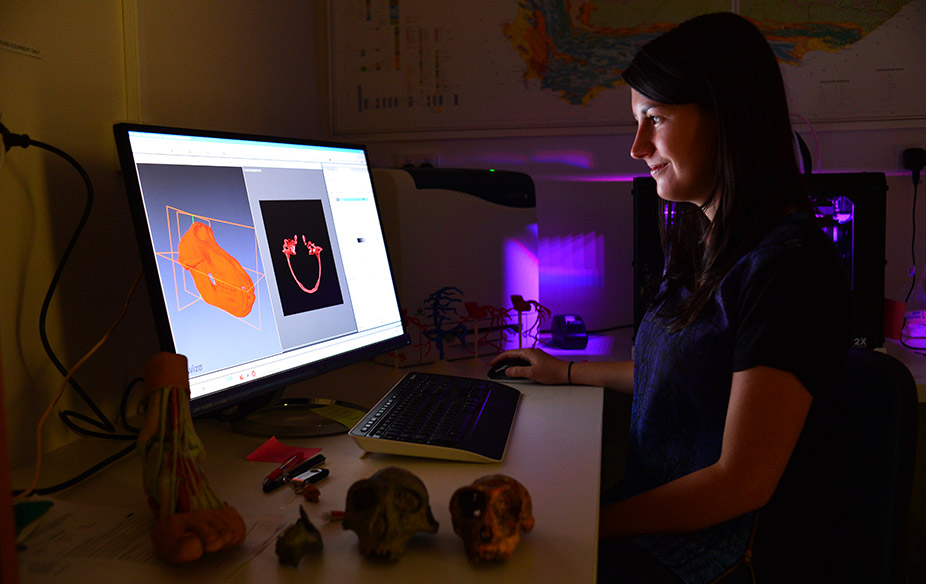RCC is building the Characterisation Data Enhanced Virtual Laboratory (CVL) desktop to enable UQ researchers to leverage a local system for imaging workloads and keep data nearby.
In collaboration with Monash University, RCC is integrating its work into the CVL portal so users can launch a desktop via the single national portal and access a range of national and state-level resources, including on the RCC-supported Awoonga compute cluster.
The CVL, freely available to researchers, integrates high-value Australian imaging instruments with specialised computing capabilities and offers a common remote desktop environment, hosted in the national research cloud to support data analysis, data management and collaboration.
RCC is currently connecting a range of UQ instruments — mostly in the Centre for Advanced Imaging (CAI) and Centre for Microscopy and Microanalysis (CMM) — to the CVL.
This work will also provide the ability to expose data collections in UQ’s Research Data Manager (RDM) to CVL, providing a seamless workflow from instrument to analysis and visualisation.
A national training plan for CVL users, developed by RCC’s Marco Fahmi, will be announced in the coming months.
The CVL, launched in 2017, has worked with 26 facilities to integrate more than 100 scientific instruments. Work continues to extend the range of featured instruments and data tools.
The CVL project initially developed four research applications in multi-modal or large-scale imaging in neuroscience, structural biology, atom probe and X-ray science, and through partnership, this has been extended to cytometry, neutron-beam imaging, light microscopy, and bioinformatics.
The CVL has been instrumental in helping position research communities in esteemed regard within international spheres. For example, under the banner of the CVL, UQ, Monash University and the University of New South Wales have partnered to develop critical imaging post-processing and visualisation techniques that do not currently exist because the technique is so new.
"We are experiencing a microscopy revolution... 4D imaging (3D imaging plus time sequencing information) is shaping the future of imaging. Desktop analysis environments are no longer able to store or analyse the resulting terabyte data sets. That’s why CVL is needed,” said CVL Manager Dr Wojtek James Goscinski of Monash University.
“The increase in availability of next-generation imaging techniques has resulted in a rapid rise in CVL users”.
The CVL was based on a strategy by a group comprised of representatives from Monash University, the Australian Microscopy & Microanalysis Research Facility (AMMRF), Australian Nuclear Science and Technology Organisation (ANSTO) and National Imaging Facility (NIF).
The portal is funded by the Australian Research Data Commons (ARDC) and operated by MASSIVE (Multi-Modal Australian Sciences Imaging and Visualisation Environment) in partnership with Monash University, Microscopy Australia, ANSTO, NIF, and the universities of Sydney. Queensland, Western Australia and Wollongong.
For CVL enquiries, please contact the MASSIVE helpdesk. Follow the CVL on Twitter.
This article includes information from a Nectar case study.
